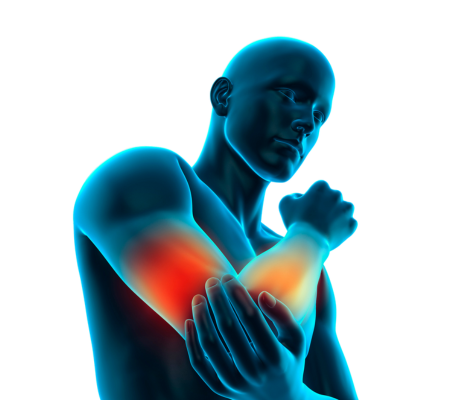The upper extremities refer to the parts of the body involved in arm and hand movements, including the shoulder, arm, elbow, forearm, wrist, and hand. Orthopedic conditions and injuries affecting the upper extremities can significantly impact a person’s ability to perform daily activities, work, and participate in sports or recreational activities. Here are some common orthopedic conditions and surgeries related to the upper extremities:
1. Rotator Cuff Tear:
The rotator cuff is a group of muscles and tendons that stabilize the shoulder joint. A tear in the rotator cuff can cause pain, weakness, and limited shoulder movement. Treatment options may include physical therapy, medication, and in some cases, surgical repair of the torn tendon.
2. Shoulder Dislocation:
Shoulder dislocation occurs when the upper arm bone (humerus) pops out of the shoulder socket. It often happens due to trauma or sports injuries. The treatment involves relocating the joint back into the socket (closed reduction) and may require immobilization or, in some cases, surgical repair to stabilize the shoulder joint.
3. Tennis Elbow (Lateral Epicondylitis):
Tennis elbow is a condition characterized by pain and inflammation on the outside of the elbow. It is commonly caused by repetitive motions of the forearm and wrist. Treatment may include rest, physical therapy, anti-inflammatory medications, and in some cases, corticosteroid injections.
4. Carpal Tunnel Syndrome:
Carpal tunnel syndrome is a condition that occurs when the median nerve, which runs through a narrow passageway in the wrist called the carpal tunnel, becomes compressed. It can cause symptoms such as pain, numbness, and tingling in the hand and fingers. Treatment options range from splinting and medication to surgical release of the carpal tunnel to relieve pressure on the nerve.
5. De Quervain’s Tenosynovitis:
De Quervain’s tenosynovitis is a condition that involves inflammation of the tendons located on the thumb side of the wrist. It causes pain and swelling, making it difficult to grip or move the thumb. Treatment may include rest, splinting, anti-inflammatory medications, and sometimes corticosteroid injections.
6. Trigger Finger:
Trigger finger is a condition where one of the fingers gets stuck in a bent position and then suddenly snaps straight. It occurs due to inflammation or thickening of the tendon sheath in the finger. Treatment options may include rest, splinting, hand exercises, and, in severe cases, surgical release of the tendon sheath.
7. Hand Fractures:
Fractures in the bones of the hand can occur due to trauma or impact. The treatment depends on the type and severity of the fracture and may involve casting, splinting, or surgical intervention to align and stabilize the broken bones.
Orthopedic surgeons specializing in upper extremities can evaluate and diagnose these conditions through physical examination, imaging studies, and other diagnostic procedures. They will recommend the most appropriate treatment plan, which may involve non-surgical interventions such as medication, physical therapy, or splinting, or surgical interventions if necessary. The choice of treatment depends on the specific condition, severity of symptoms, patient factors, and the goals of the individual. At Alabama Bone and Joint Clinic our specialists are able to guide you through your treatment options. Call today to schedule an appointment with one of our experts in orthopedic care.

I don’t think you could find a better doctor than Dr Dykes! The fact that the entire staff are great.... that is rare.
Very pleasant visit and seen in a timely manner.
Very nice people and super doctor's and the done push for surgery straight off the bat they rather try other things first.

